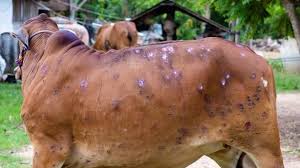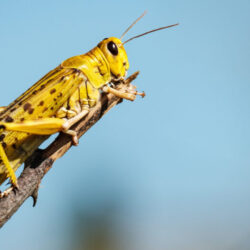A silent epidemic is sweeping through pastoral communities, casting a long shadow over the continent’s livestock industry. Lumpy Skin Disease (LSD), a viral infection that causes devastating economic losses, is rapidly emerging as a major threat, leaving farmers grappling with reduced milk production, damaged hides, and alarmingly high mortality rates.
The impact of LSD is far-reaching, striking at the very heart of pastoral livelihoods. Dr. Glyn Davies, a leading virologist, warns that while typical mortality rates hover between 1% and 5%, outbreaks can escalate dramatically, with losses soaring to a catastrophic 40%. This disease is not merely a veterinary concern; it is an economic crisis that ripples through entire regions, disrupting meat and milk production, stunting cattle growth, and eroding the foundations of local economies.
In the face of this growing threat, vaccination emerges as the most potent weapon. Currently, no antiviral treatment exists to combat LSD, leaving farmers reliant on preventative measures. Fortunately, effective vaccines are available, with both the Neethling and Kenya Sheep & Goat Pox Virus vaccines proving successful in thwarting outbreaks.
South African veterinary researchers have also developed a highly effective live attenuated vaccine, a testament to decades of research and a crucial tool in the fight against LSD. Dr. Danie Odendaal, a respected veterinarian, emphasizes that LSD is “100% preventable” with the diligent implementation of vaccination strategies.
The success of these strategies hinges on proactive engagement. Young cattle, the most vulnerable to the disease, should be prioritised for vaccination, followed by annual boosters for mature herds. Ring vaccination, creating a protective buffer zone around affected areas, is also recommended to contain outbreaks.
Beyond vaccination, farmers must adopt stringent biosecurity measures. Isolating infected animals, providing supportive care, and closely monitoring for complications are essential steps in mitigating the impact of LSD.
The history of LSD serves as a stark reminder of its destructive potential. First reported in Zambia in 1929, the disease spread rapidly across southern Africa, leaving a trail of devastation in its wake. Today, LSD remains endemic in sub-Saharan Africa, with growing concerns that it could spread further into North Africa and the Middle East.
Recognizing the symptoms of LSD is crucial for early intervention. Fever, nasal discharge, and the telltale skin nodules are key indicators. Severe cases can lead to pneumonia, necrotic skin damage, and even abortion.
As climate change and the movement of livestock contribute to the spread of LSD, collaboration becomes paramount. Farmers, veterinarians, and policymakers must unite to implement effective control strategies. Only through collective action can we safeguard Africa’s livestock industry and protect the livelihoods of countless pastoral communities.




